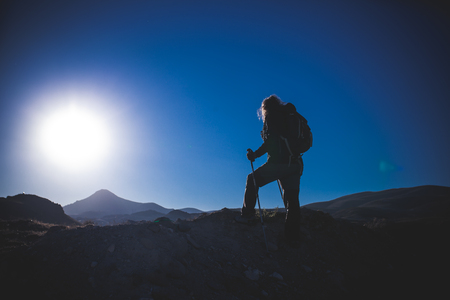1. Understanding the Importance of Warm Up and Cool Down
Before you lace up your hiking boots and hit the trail, it’s crucial to know why warming up and cooling down aren’t just for pro athletes—they’re essential for every hiker, whether you’re tackling a local state park or heading deep into the backcountry. Ignoring these steps can mean more than just stiff muscles; it can set you up for injuries that could end your adventure early.
Why Warming Up Matters
Jumping straight from the car onto rugged terrain is a rookie mistake. A proper warm up preps your muscles, joints, and heart for what’s ahead. It increases blood flow, gets your mind focused, and helps prevent strains or sprains that can ruin your day. Think of it as loading up your system with high-octane fuel before a long haul.
Key Benefits of Warming Up
| Benefit | How It Helps on the Trail |
|---|---|
| Injury Prevention | Reduces risk of pulled muscles, rolled ankles, and overuse injuries common on uneven ground |
| Improved Performance | Makes your body more efficient, so you tackle hills and rough patches with less fatigue |
| Mental Focus | Prepares your mind for quick decisions and alertness needed in unpredictable environments |
The Role of Cooling Down After Your Hike
Once you’ve crushed those miles and made it back to the trailhead, don’t just plop down in the car. Cooling down gradually brings your heart rate back to normal and starts the recovery process right away. It also helps flush out lactic acid that builds up during tough climbs or descents—meaning less soreness tomorrow.
Main Reasons to Cool Down
- Avoid Dizziness: Prevents blood pooling in your legs after strenuous activity, which can make you feel light-headed.
- Faster Recovery: Helps reduce muscle tightness so you’re ready for your next hike sooner.
- Flexibility: Stretches post-hike help maintain range of motion in hips, knees, and ankles—your key hiking joints.
Don’t Skip These Steps—Your Body Will Thank You
If you want to keep exploring new trails week after week without setbacks, making warm ups and cool downs part of your routine is non-negotiable. Whether you’re hiking through a national park or on a local loop, a few minutes before and after makes all the difference between being sidelined or staying trail-ready for the long haul.
2. Essential Warm Up Techniques Before Hitting the Trail
Why Warming Up Matters for American Hikers
If you want to hit those Appalachian or Rocky Mountain trails feeling strong and ready, warming up is non-negotiable. Skipping this step can leave you stiff, slow, and even risk a rolled ankle before you reach the first viewpoint. Smart hikers know: taking 10 minutes for proper warm-up pays off big time on the trail.
Dynamic Stretching: Get Moving, Not Just Standing Still
Forget old-school toe-touch-and-hold stretches. Hiking demands mobility and power. Dynamic stretching uses controlled movement to prep your muscles and joints for action. Here are American hiker favorites:
| Exercise | How To Do It | Target Area |
|---|---|---|
| Leg Swings | Swing each leg forward/backward, then side-to-side, 10 reps each direction per leg. | Hips, Hamstrings, Glutes |
| Lunges with Torso Twist | Step forward into a lunge; twist your torso toward the front knee. Alternate legs for 10 reps. | Hip Flexors, Core, Quads |
| Knee Hugs | Pull one knee to your chest while standing tall; alternate legs for 10 reps each side. | Glutes, Lower Back |
| Ankle Circles | Lift one foot off the ground; rotate your ankle clockwise and counterclockwise, 10 times each. | Ankles (critical for rocky American terrain) |
Mobility Drills: Build Range of Motion for Steep Trails and Uneven Ground
The U.S. backcountry throws all kinds of terrain at you—roots, rocks, mud, scree. Mobility drills help your joints move freely so you can handle it all.
- Hip Openers: Stand tall and draw big circles with your knee out to the side (like climbing over a fence). Do 8 circles per leg.
- Cowboy Walks: Take wide steps with high knees as if stepping over logs—perfect for prepping those trail muscles.
- Lateral Shuffles: Side-step quickly 15 feet down and back. This preps hips and ankles for narrow switchbacks or river crossings.
Light Cardio: Get Your Heart in the Game
A little light cardio fires up your system before you even see the first trail marker. Here’s what works well stateside:
- Brisk Walking or Jogging: March around the parking lot or trailhead for 5 minutes.
- Jumping Jacks: Classic American warm-up—do 30 seconds to get blood pumping from head to toe.
- Mimic Hiking Movements: With your pack on, try some gentle stair climbs or step-ups on a sturdy rock or bench.
Toughen Up: Key Tips for Safe Warm-Ups in Any U.S. Environment
- Pace Yourself: The point isn’t to exhaust yourself—just wake up your body before the real work starts.
- Dress Smart: Layer up or down based on season and region (from chilly Colorado mornings to humid Carolina afternoons).
- No Shortcuts: Don’t skip warm-up just because everyone else at the trailhead is eager to go—injury will sideline your adventure fast!

3. Recognizing the Right Time and Place for Warm Ups
Warming up before a hike is not just about stretching your muscles—it’s about prepping your entire system for what’s ahead. Doing it right means knowing exactly when and where to loosen up so you don’t waste time or energy. Here’s how you can get the most out of your warm-up routine, no matter if you’re at a bustling national park trailhead or a quiet local nature reserve.
When Should You Warm Up?
The best time to start your warm-up is right before you begin hiking. If you drive to the trailhead, step out, shake off the stiffness from sitting, and then kick off your routine. If you bike or walk to the trail, adjust your warm-up so it fits into your arrival—don’t skip it just because you’ve moved around a bit already. Your goal is to get your blood pumping and joints moving, but not to tire yourself out before you even hit the trail.
Timing Tips
| Situation | Optimal Timing |
|---|---|
| Drove to trailhead | Start warming up as soon as you exit your vehicle |
| Biked or walked to location | Add a shorter dynamic warm-up before hiking |
| Group hikes/events | Coordinate with group and use waiting time for active stretching |
| Early morning hikes | Add extra time for gentle mobility drills—your body may be stiffer after sleep |
Finding Practical Locations for Your Warm Up
You don’t need fancy equipment or a gym floor. The right place is wherever you have space and safety. At a national park trailhead, look for open gravel lots, picnic areas, or grassy spots near parking. For local trails, use any flat area near the entrance or even the sidewalk before you head in. The key: avoid blocking other hikers and stay clear of moving cars or bikes.
Examples of Good Warm-Up Spots
| Location Type | Where to Warm Up | Why It Works |
|---|---|---|
| National Park Trailhead | Open lot edge, grassy patch, next to info kiosk (if space allows) | Usually flat and visible; lets you monitor gear while warming up |
| Local Nature Reserve Entrance | Paved sidewalk, rest area bench zone, picnic shelter perimeter | No traffic; often shaded; easy access for groups or solo hikers alike |
| Urban Trail Start Points | Curbside grass strip, wide sidewalk, small park entry plaza | Easily accessible; space for dynamic moves without crowding others |
| Backcountry/Remote Areas | Clearing off main path; away from steep drop-offs or thick brush | Keeps things safe and minimizes environmental impact |
Tactical Tip:
If the weather is cold or wet, try warming up inside your vehicle first with seated mobility moves (ankle circles, shoulder rolls), then finish outside with standing stretches once you’re ready to layer down and move out.
Choosing the right time and place to warm up means less risk of injury and more miles on the trail. Make it a habit—your body will thank you every hike.
4. Cool Down Strategies to Aid Recovery
Why Cooling Down Matters After a Hike
Finishing a hike and jumping straight into your car or tent is tempting, but skipping your cool down can leave you stiff, sore, and less ready for your next adventure. Proper cool down routines help lower your heart rate gradually, flush out lactic acid, and reduce muscle soreness. This means you’ll recover faster and feel less beat up the next day—critical for multi-day hikes or back-to-back weekend treks.
Effective Cool Down Exercises
Right after your hike, spend 5-10 minutes walking at a slow pace on flat ground. This helps bring your breathing and heart rate down gently while keeping blood flowing through tired muscles. Avoid sitting or lying down immediately, as this can cause tightness or cramps.
Sample Cool Down Routine
| Exercise | Duration | Tips |
|---|---|---|
| Easy walk on flat trail or parking lot | 5 minutes | Breathe deeply and relax shoulders |
| Ankle circles (each direction) | 30 seconds per foot | Loosen up ankles after rocky trails |
| Knee hugs (standing) | 30 seconds per leg | Hold knee gently to chest, keep back straight |
Static Stretches to Minimize Soreness
After your cool down walk, move into static stretches. Hold each stretch for 20–30 seconds without bouncing—this helps lengthen muscles and prevent tightness.
Top Static Stretches for Hikers
| Muscle Group | Stretch Name | Description |
|---|---|---|
| Hamstrings | Seated Forward Bend | Sit with legs straight, reach for toes while keeping back flat. |
| Quads | Standing Quad Stretch | Stand tall, pull one ankle toward glutes, keep knees together. |
| Calves | Cowboy Wall Stretch | Lean into a tree or wall with one foot behind, press heel down. |
| Hip Flexors | Lunge Stretch | Kneel on one knee, push hips forward gently. |
| Lower Back & Glutes | Lying Figure Four Stretch | Lying on your back, cross ankle over opposite knee, pull leg in. |
| Shoulders & Upper Back | Crossover Arm Stretch | Swing one arm across body at chest height, use other hand to hold it in place. |
Pro Tips for Trail Recovery:
- If you have access to a foam roller or massage ball in your pack or car, spend 2–5 minutes rolling out calves and quads.
- If the weather’s cool or windy, throw on an extra layer during your cool down to avoid getting chilled as you stretch out.
- A quick snack with protein and carbs helps refuel tired muscles after stretching.
- If possible, elevate your feet against a tree trunk or rock for 1–2 minutes to help reduce swelling from long hikes.
The right cool down keeps you moving strong and ready for whatever the trail throws at you next time.
5. Integrating Hydration and Nutrition with Warm Up and Cool Down
Why Timing and Choice Matter
If you want to hit the trail feeling strong and finish your hike without crashing, what you eat and drink before and after matters just as much as stretching out your legs. Pairing hydration and nutrition with your warm up and cool down will keep your energy steady, help prevent cramps, and speed up recovery—essentials for any American hiker, whether youre heading for the Rockies or a local state park.
Pre-Hike: Fuel Up Right
When to Eat and Drink
- Eat: 1–2 hours before your hike. Too soon, you risk an upset stomach; too late, you’ll run out of steam fast.
- Drink: Start sipping water at least 30 minutes before you hit the trail. Avoid “chugging” right before you go; it can make you feel sluggish.
What to Eat and Drink Before Hiking
| Food/Drink | Why It Works |
|---|---|
| Oatmeal with fruit | Sustained energy from complex carbs; easy on the stomach |
| Peanut butter toast | Mix of protein, healthy fats, and carbs for fuel |
| Greek yogurt & granola | Quick protein plus slow-burning carbs |
| Water (12–16 oz) | Keeps you hydrated without overloading your bladder |
| Coffee or tea (optional) | A small caffeine boost if that’s part of your normal morning routine |
During Your Warm Up: Sip Smart
No need for sports drinks unless youre going super long or its hot out. Stick to water—take a few sips as you do dynamic stretches like leg swings or lunges. Don’t overdo it; you want to avoid sloshing in your gut when you start hiking.
Post-Hike: Recovery Starts Here
When to Refuel and Rehydrate
- Drink: Within 30 minutes of finishing, start replacing lost fluids. Aim for small sips over chugging.
- Eat: Have a snack or meal within an hour post-hike. This is key for muscle repair and keeping soreness at bay.
What to Eat and Drink After Hiking
| Food/Drink | Why It Helps Recovery |
|---|---|
| Chocolate milk (low-fat) | Ideal carb-to-protein ratio for muscle recovery; classic American post-workout drink |
| Deli turkey sandwich on whole wheat bread | Lean protein + complex carbs to refuel muscles and replenish energy stores |
| Banana with almond butter | Packed with potassium, magnesium, and healthy fats for cramp prevention and joint health |
| Sliced apples & trail mix | Nutrient-rich carbs plus a little salt to replace electrolytes lost in sweat |
| Coconut water or electrolyte drink (if sweating a lot) | Replaces sodium, potassium, and other minerals lost during intense hikes or hot weather treks |
The American Trailhead Routine: Keep It Simple, Keep It Consistent
- Mornings often mean coffee—just balance it with enough water.
- Avoid heavy breakfasts that sit in your stomach; think light but filling.
- Packing snacks? Go for familiar favorites like beef jerky, granola bars, or peanut butter crackers.
- If you’re day hiking, stash an extra bottle of water in your pack as backup.
- No alcohol before hitting the trail—it dehydrates you fast.
- Coffee shops near popular trailheads are a common pit stop post-hike—just remember to hydrate first.
This approach fits right into classic American hiking habits: smart prepping, staying fueled, and recovering quick so youre ready for whatever comes next on the trail.
6. Pro-Tips for Solo and Group Hikers
Why Warm-Ups and Cool Downs Matter—Especially in the Wild
Whether you’re setting out solo or with a crew, the way you prep your body can make or break your hike. Warming up gets your muscles ready for action, while cooling down helps prevent soreness and injuries. But how you do this changes depending on if you’re alone or leading the pack.
Solo Hiker Hacks: Stay Safe, Stay Efficient
| What To Do | How It Helps |
|---|---|
| Pick a visible spot to warm up (trailhead, near car) | Makes you easy to spot in case of emergency and deters unwanted attention |
| Use dynamic stretches like high knees, leg swings, arm circles | Primes muscles fast without wasting time; keeps you alert |
| Time your routine (5-7 minutes) | Efficiently preps your body without cutting into hiking daylight |
| For cool downs, choose open ground and face outward | Keeps awareness high as heart rate drops; good for situational safety |
| Pack a mini foam roller or lacrosse ball | Treats knots and muscle tightness before heading home; fits in any pack |
Accountability Tip:
Leave a quick voice memo or text update before and after your hike. If something feels off during warm-up or cool down, let someone know.
Group Trekking: Teamwork Makes the Dream Work
| Group Warm-Up Move | Why It Works |
|---|---|
| Circular stretch formation (everyone faces center) | No one gets left out; easy headcount for safety checks |
| Synchronized dynamic moves (e.g., walking lunges down trailhead line) | Keeps group energy high; builds camaraderie from the jump |
| Assign a “stretch captain” each trip | Makes sure everyone actually does it; creates accountability without nagging |
| Cool down together at the end point—preferably with everyone present | Catches injuries or exhaustion early; lets everyone decompress as a unit |
| Buddy check during stretches (look for limping, shortness of breath) | Crowdsources safety so nothing slips through the cracks—even with big groups |
Efficiency Tip:
If you’ve got new hikers in the group, demo every stretch first. Seasoned trekkers: lead by example—don’t skip your own routine just to save time.
Your Safety Net: Always Adapt for Terrain & Weather
- If it’s cold, spend extra time on full-body movements to boost core temp before hitting the trail.
- If it’s hot or humid, keep routines short but deliberate—hydrate before you start moving.
- Adjust cool downs if rain’s rolling in—foam roll at home but hit at least 2-3 key stretches before packing up.
No Excuses: Build These Routines Into Every Hike
A solid warm-up and cool down aren’t just for elite athletes—they’re for anyone who wants to hike longer and recover faster. Whether you’re flying solo or wrangling a squad, these pro-tips keep your body ready and your adventure safer from start to finish.

